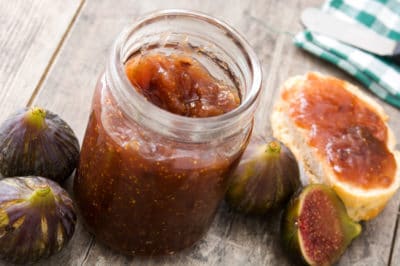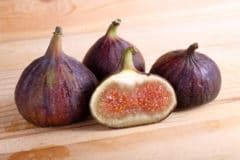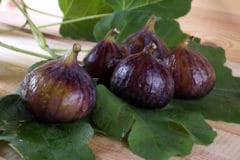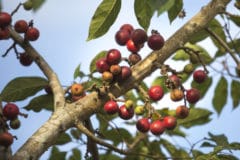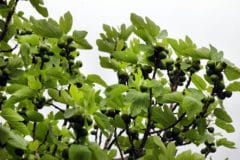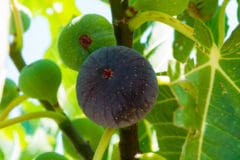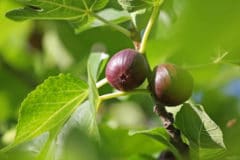Picking Figs for Best Quality
Knowing when figs are ripe takes practice. The fruit should be fully colored and the skin will look crackled just under the surface. The fig should feel soft and the end should just be starting to open. Avoid figs that feel mushy-soft or that smell sour. Pick daily once the trees start to bear. Always pick ahead of a predicted rain – heavy rain may cause split fruit.
Good Varieties for Canning Figs
In addition to eating fresh, certain varieties of figs are better for freezing, drying or in preserves. The following are good choices for canning:
- Celeste – purple-bronze with strawberry-colored pulp.
- Kadota or Dottato – yellow-green with amber pulp.
- Martinique White – yellow-green, pulp white.
- Magnolia – reddish brown with amber pulp.
Canning Basics
While you should follow a tested recipe, canning figs is a simple process. Wash the fruit and cook in syrup. Always add lemon juice or citric acid to ensure adequate acidity. Figs have a pH range of 4.9 to 5.0, which is too low for canning without additional acid. The hot fruit is spooned into jars and covered with boiling syrup, then processed in a hot water bath.
Estimating Quantities
Translating a box or basket of figs into the canned equivalents helps you determine the amount of supplies and jars you need. Eleven pounds of figs, which is about four dozen large figs, will make nine pints of canned figs. For seven quarts of canned figs – a standard canner load – you’ll need about 11 pounds of figs.
Storing Canned Figs
Proper storage will help ensure that your figs taste good and are safe to eat. After the jars have cooled, test to ensure each has sealed properly. Store in a cool, dry place like a cellar. Never store in an area where temperatures rise above 70°F (21°C), as the seals may loosen, allowing spoilage. Although canned figs will store for about 18 months, the flavor is better if you eat them with 12 months.
Canning Variations
In addition to canning whole figs, you have other options. Some people like to can their figs with the addition of brandy. Others ferment the figs in brandy for 30 days, then decant the brandy and store the figs in the refrigerator for 30 days. Fig preserves are another way to enjoy canned figs, as is fig jam. Figs can also be frozen or dried.
